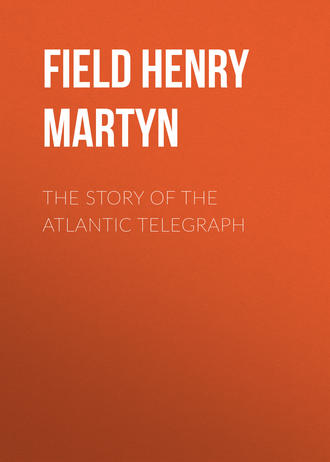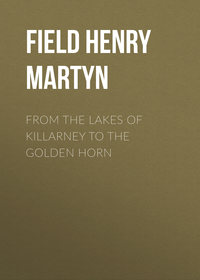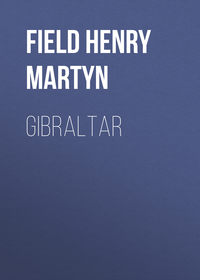 полная версия
полная версияThe Story of the Atlantic Telegraph
"Last year, each hour was divided into four parts. The first half of the hour was spent in testing for insulation. During the second half, which was divided into three periods of ten minutes each, tests were made to ascertain the resistance of the conductor and to prove the continuity of the same. All these tests were of such a nature as to afford no criterion whatever of the state of the insulation during their continuance, so that during the half of each hour, or, in other words, during half the time spent in laying the cable, the insulation test was neglected. Also, while the insulation test was being made, there was no means of communicating with the shore, as the observations were taken on board only. This year, a test for insulation is constantly kept on, and, by Mr. Willoughby Smith's arrangement, corresponding observations are made both on ship and shore. At stated times during the hour, the continuity test is made at the shore station by means of a condenser applied to the conductor of the cable. The effect of this is to increase the deflection on the ship's insulation galvanometer, thus serving as a continuity test. Communications from shore to ship are also made by these means. The ship can send signals to the shore by simply reversing the current for certain lengths of time, answering to some understood code, or by increasing and diminishing the tension of the line, according to a preärranged plan. All these operations may be performed without interrupting the insulation test, except for a few seconds while the current is being reversed. So far for the new system in the electrical room as compared with last year."
26
Mr. Dudley made a number of sketches for Mr. Field, with several large paintings, which have furnished the illustrations for this volume.
27
The little harbor that bears this gentle name, is a sheltered nook where ships may ride at anchor, safe from the storms of the ocean. It is but an inlet from the great arm of the sea known as Trinity Bay, which is sixty or seventy miles long, and twenty miles broad. On the beach is a small village of some sixty houses, most of which are the humble dwellings of those hardy men who vex the northern seas with their fisheries. The place was never heard of outside of Newfoundland till 1864, when Mr. Field, sailing up Trinity Bay in the surveying steamer Margaretta Stevenson, Captain Orlebar, R. N., in search of a place for the landing of the ocean cable, fixed upon this secluded spot. The old landing of 1858 was at the Bay of Bull's Arm, at the head of Trinity Bay, twenty miles above. Heart's Content was chosen now because its waters are still and deep, so that a cable skirting the north side of the Banks of Newfoundland can be brought in deep water almost till it touches the shore. All around the land rises to pine-crested heights; and here the telegraphic fleet, after its memorable voyage, lay in quiet, under the shadow of the encircling hills.
28
Captain Anderson, in a letter published after the return to England, says: "Every officer and man of the expedition will have pleasant recollection of the cheerful zeal of Captain Commerill, V.C., and the officers of Her Majesty's ship Terrible. Captain Commerill frequently visited us in his boats, both in high seas and in calms, and his cheery way of saying, 'You'll do it yet,' 'What can I do?' and 'I'll do it,' was truly characteristic of him. The officers of the Terrible would do any thing for their captain, and entered heartily into the object of the voyage."
Such a tribute from one brave commander to another, is most honorable to both. In the same letter he recognizes, also, the services rendered by the captains of the other ships: "I shall do but scant justice to Commanders Prowse and Batt, R. N., and Captains Eddington and Harris, Mercantile Marine, of the Medway and Albany, if I recall the three weeks spent upon the 'grappling ground,' where we were often separated by fog, gale, or darkness; yet whenever day dawned, or the fog cleared, there the squadron were to be seen, converging from different points towards the Mark Buoy, a small spot looking no bigger than a man's hat on the surface of the ocean. Unless all had concentrated their minds, and watched their ships and compasses night and day, no such beautiful illustration of nautical science could have been possible. The vessels of the squadron keeping always together, and commanded by men who knew the importance of keeping close enough to begin work whenever it was possible, and yet to avoid collision in fog, was of the greatest importance; and we owe much to that invaluable system of signalling by night and day, invented by Captain Colomb, R. N., which enabled us, even in dark nights, when two or three miles apart, to communicate or ascertain anything we desired."
29
This is an error. Mr. Crocker, an operator in the Telegraph House at Valentia, was the fortunate one on watch at that hour, on whose eye the first ray fell, as a spark of life from the dead.
30
Speech at the Chamber of Commerce Dinner, Nov. 15, 1866.
31
The Berkshire Hills, Stockbridge, Massachusetts.






